In every pantry in the world, a spice cabinet is found. Inside, there will be the standard basil, oregano, crushed red pepper flakes, salt, pepper, among many others. Spices allow folks to flavor their food in the way they like. They add so much complexity and nuance to a dish that would otherwise fall flat.
What some don’t know is that, in addition to flavoring food, compounds in spices can actually increase the longevity of one’s food storage. Different spices help different foods last longer, so it is important to do some research before storing to find out which spices influence which foods to have a long shelf life.
Here are 10 spices that make stored food last as long as possible.
Related: 22 Ingenious Hacks to Make Food Last Longer
Honey
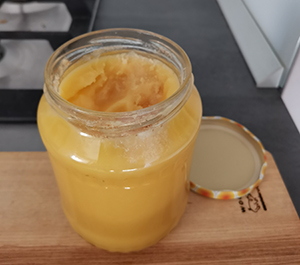 Once opened, honey will last forever. Containers of honey have been excavated from ancient tombs in Egypt, still perfectly edible today. Ancient Egyptians also used honey for embalming royalties due to its preservation qualities.
Once opened, honey will last forever. Containers of honey have been excavated from ancient tombs in Egypt, still perfectly edible today. Ancient Egyptians also used honey for embalming royalties due to its preservation qualities.
Today, honey can be used for preserving all kinds of foodstuffs. Preserving seeds in honey is a great way to make garden seeds last through the winter.
Animal products such as eggs or cuts of meat can also last if completely submerged in honey. The idea is that honey doesn’t spoil, so anything submerged inside should last years.
⇒ What Happens If You Pour Honey Over Onions
The type of honey is important; natural honey without additives will be the best type for preservation. Food stored with manufactured honey will rot within days, in comparison to all-natural honey, which should preserve indefinitely.
Salt
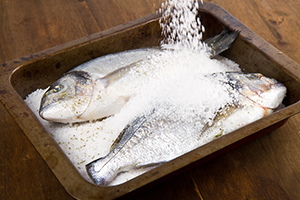 Salt food preservation has been around for centuries, long before humans utilized refrigeration. It is commonly used with preserving meats, fish, and vegetables.
Salt food preservation has been around for centuries, long before humans utilized refrigeration. It is commonly used with preserving meats, fish, and vegetables.
In the past, salt preservation allowed people to eat during times of winter or drought, when food was scarce.
Salting works by drawing out moisture of the food being preserved. Moisture is like a breeding ground for bacteria, so salting prevents bacteria growth.
To salt a piece of meat or fish, cover it completely with a one-inch thick layer of sea salt or kosher salt. Table salt will not work for preserving. Be sure the salt has an even thickness around the meat to prevent any bacteria from getting in. Hang in a cool, dry place until ready to eat. Depending on the climate, meat and fish can be salted and hung to dry in a cool, dark place for up to one year!
Garlic
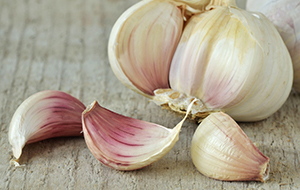 Garlic contains an active ingredient called allicin, which is known to have an antimicrobial effect. It is theorized that when crushing garlic, the allicin is released and will have more health benefits, even once cooked.
Garlic contains an active ingredient called allicin, which is known to have an antimicrobial effect. It is theorized that when crushing garlic, the allicin is released and will have more health benefits, even once cooked.
In a study done by researchers at the University of Eastern Africa, Baraton, garlic was found to produce lastability in preserving harvested pumpkin over other spices, due to its high amounts of allicin. The garlic allowed the pumpkin to be stored for five days, while other spices caused rot by the second day.
Black Pepper
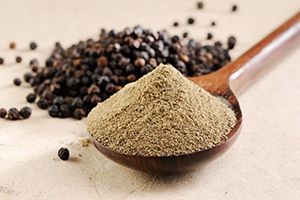 Existing food preservation calls for the use of chemicals and additives, which not everyone wants to ingest. Black pepper has antimicrobial, antifungal, and prebiotic properties, and is an amazing spice to add to preserved foods.
Existing food preservation calls for the use of chemicals and additives, which not everyone wants to ingest. Black pepper has antimicrobial, antifungal, and prebiotic properties, and is an amazing spice to add to preserved foods.
Black pepper will commonly be found in preserving jams, pickles, preserves, and candies. Add whole peppercorns to pickles, while adding ground black pepper to preserves and jams. Doing so will extend the shelf life of your food up to one month, once the preserving seal is broken.
While black pepper will aid in preservation, it will also add a multitude of health benefits to preserved foods.
Sugar
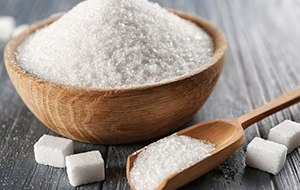 Preserving foods with sugar is as common as preserving with salt. The process of making jams, jellies and preserves are all aiding in preservation by way of sugar. Sugar draws out water from microbes, eventually killing them in the process.
Preserving foods with sugar is as common as preserving with salt. The process of making jams, jellies and preserves are all aiding in preservation by way of sugar. Sugar draws out water from microbes, eventually killing them in the process.
Much like how all-natural honey preserves foods when submerged, sugar will preserve in the same way.
This is how sterilized jars of homemade jam stay preserved at room temperature for such a long time. Adding sugar or concentrating sugar from fruit is a no-fail way of preserving produce, such as fruits, onions, and meats such as bacon, and turning them into something that is delicious and will last many years inside a sealed jar.
Ginger
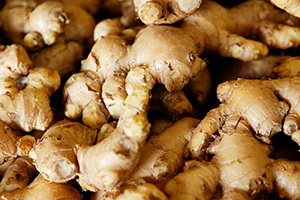 Ginger is an ingredient that helps upset stomachs, prevents the flu, and stimulates saliva production.
Ginger is an ingredient that helps upset stomachs, prevents the flu, and stimulates saliva production.
It is also a great food preservative. Ginger has antimicrobial and anticarcinogenic properties. Crushed ginger with juice and pulp is a delicious additive that will help preserved foods last longer.
Modern technology has allowed for the extraction of these active ingredients to aid as a food preservative commercially. For the people at home who would like to use ginger as a food preservative, add it to jams, preserves, or pickles to add a few additional months of preservation time.
Sage
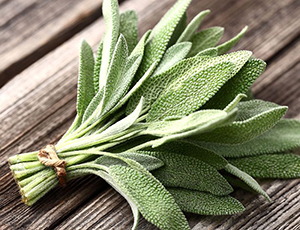 The essential oils in sage are common food preservatives found in packaged goods, such as liver pate. The oils, however, are heavily diluted, as concentrated sage essential oil is not considered safe to consume.
The essential oils in sage are common food preservatives found in packaged goods, such as liver pate. The oils, however, are heavily diluted, as concentrated sage essential oil is not considered safe to consume.
Before refrigeration, sage was used as a preservative particularly for meat. While meat was in the drying process, sage would be added to mask any funky flavors from the drying process. This is due to the antimicrobial and antibacterial properties of sage. When used in this way, sage will help preserve meat for up to 1 year.
Rosemary
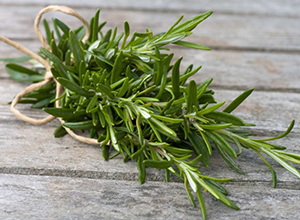 Rosemary extract is one of the most common food preservatives used in the UK. Rosemary is known as the alternative preservative to chemicals, as it has loads of antioxidant-rich polyphenols.
Rosemary extract is one of the most common food preservatives used in the UK. Rosemary is known as the alternative preservative to chemicals, as it has loads of antioxidant-rich polyphenols.
Rosemary contains carnosic acid and rosmarinic acid, which aid in delaying oxidation of fats and halt any microorganisms from spreading.
Rosemary extract works well in homemade dried sausages, and can also be used in canned and preserved salad dressings. Doing so will extend the shelf life of canned goods for up to 6 months.
Mustard
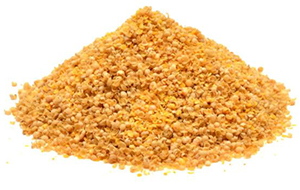 Spicy ingredients like mustard love to fight off harmful bacteria when added to dishes.
Spicy ingredients like mustard love to fight off harmful bacteria when added to dishes.
The University of Alberta conducted a study in 2012 testing mustard seed waste as a food preservative. In the past, mustard seed waste was seen as a “low value” waste item, and was disposed of immediately.
Researchers hypothesized that utilizing this waste as a food preservative would have positive effects. The antibacterial effects on food preservation were positive, and it was found that mustard seed does, in fact, aid in food preservation. Using mustard seed will add about 1-2 weeks to it’s shelf life.
Cumin
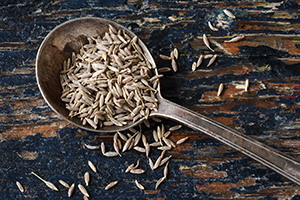 A member of the parsley family, cumin is a small seed commonly referred to as the “Spice of the Ancients”.
A member of the parsley family, cumin is a small seed commonly referred to as the “Spice of the Ancients”.
Like salt, cumin has been used as a food preservative for centuries. It possesses anti-inflammatory components and antioxidants, helping contribute to stable food preservation.
Ancient Egyptians used cumin in the mummification process, much like honey.
Cumin today will likely be mixed with salt or sugar to aid in the preserving process and can extend shelf life by 2 weeks to 2 years, depending on how it is used.
There are tons of benefits to using spices over chemical additives in food preservation. For the home cook who wants to ensure their food lasts as long as possible, using these 10 spices will ensure your food will last as long as humanly possible.
Spices have been used for centuries to preserve meats, fish, and vegetables through winter, unseasonable weather, and food shortages. Taking the chemicals out of food storage and bringing in natural alternatives is better for the Earth and for one’s health.
You may also like:
 The Only 6 Seeds You Need to Stockpile for a Crisis
The Only 6 Seeds You Need to Stockpile for a Crisis
If You See This Plant in Your Backyard, Burn It Immediately! (Video)
How to Make 2400 Calorie Emergency Ration Bars Designed to Feed You for a Full Day

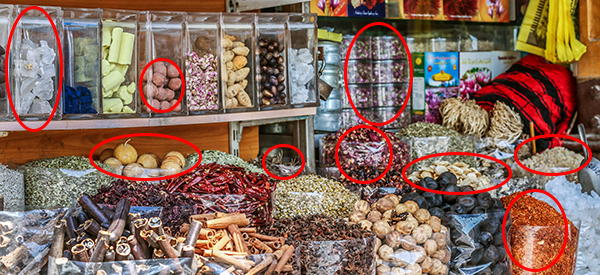













Honey isn’t a spice.
You lose the point. Who cares of funny using his face. You lose the point. Who cares of Honey isn’t a spice. You can still use it as such. Have a nice day. Get a clue.
Great article. We love the use of spices and herbs. My mother had discovered adding extra garlic to her dill pickles made them keep nice much longer once opened. My boys loved that. They liked the pickled garlic from the bottom of the jar even better than the rest of the pickles. I like a few slices of fresh ginger in my canned peaches and pears. Not enough to over power their flavors. Just enough to enhance theater flavors.
Wish there were directions on how to use these spices.
Honey, salt and sugar aren’t spices!
I don’t know. One finds salt in the spice aisle in the grocery store. I think it is a fine hair you split, Rebecca. Honey and sugar, I would agree but needing a short punchy headline, Tracy rounded a couple of corner. I personally don’t think it is a fatal error.
The only criticism I would have is that it doesn’t look like the fish were gutted in the picture. I have never actually preserved fish with salt, so I may not know what I am talking about, but if I were to take my first attempt at salting fish without further research, I would remove the internal organs, the tail and the fins and perhaps scale the fish.
Would appreciate hearing how the pros do it if there is one following this list.
LCC, I tried salt fish once when I was stationed in
Scotland. I say tried because even though she changed out the soaking water multiple times trying to get as much of the salt out, it still wasn’t enough. My downstairs neighbor gave me some after a long day at work. She had a very thick accent, using some English but also Gaelic. In that part of Scotland, the normal speaking style was mumbled. Luckily, her husband had been a merchant Marine so I understood him better. The first bite made my mouth burn, there was so much salt. I tried a second bite and then wished I hadn’t. I ended up having to throw it out it was so salty. I returned the plate it came on to her husband. He grinned at me and asked how I liked it. I just couldn’t be rude to them. They were so nice to give me the fish. I told him it was interesting. He started to chuckle and said the salt was too much, wasn’t it. He told me to be honest. I was and sai a little too much for my taste. He laughed.
I suspect you are right about gutting the fish but the head, tail, and fins remain on. As for the scaling, since it had been cooked I couldn’t tell you. I suspect it could be done with or without scales though. Only one of my adventures with Scottish cooking.
Soaking the fish in multiple changes of water is necessary, and it is still very salty. Salt fish is best used more as a component of a dish, rather than the main dish itself…think finnan haddie or Jamaican ackie and salt cod.
Rebecca, In our cookbooks yes, but that’s not true everywhere in the world. Spices here are things that add flavor and salt, honey and sugar definitely do add flavor! to any dish. So do the herbs, Sage, Rosemary, and the roots mentioned, Ginger, Garlic, in this article as well. They wouldn’t be considered spices in our cookbooks either!
Honey is plant based – bees slurp up the flower nectar and then the enzymes in their stomachs partially digest it, producing the honey substance, which they regurgitate in the honeycomb of the hive for consuming later. Honey flavors food – its distinct taste does much more than just sweeten a dish.
Thanks for the lesson
Until 1600 spice was the main commodity driving international trade. Our modern world was largely shaped by Europe’s desire for spices. Black pepper was rare and the wealthy were willing to spend a fortune in lives and gold just to sprinkle it on their food. Gets me to thinking Preppers greatly undervalue spices as a source of wealth after SHTF. Hard to imagine life w/o spices, an endless diet of salty chicken, salty pork, salty varmints and then what you might be willing to trade for a couple pounds of black pepper, cinnamon, and nutmeg.
In the antebellum South the lady of the house kept the key to the spice locker on her person. Tea, coffee, salt, and the other spices were kept in the spice locker and were doled out by the lady of the house as needed for the day’s meals. I don’t believe honey was considered a spice and was not kept in the locker as it was available, generally, locally or sometimes on the farm/plantation itself.
A significant number of spices came from the Far East and were exorbitant by today’s prices. Either around the cape of Africa or South America, If the ships made landfall on the West Coast of the U.S. after crossing the Pacific, they then had to cross the continental U.S. via wagon train. Its easy to see why they were expensive and were kept locked up.
When there is an opportunity, I like to rummage through antique shops. There you can get quite an unusual culinary history lesson! Tea caddies, spice cabinets, sugar safes, and salt boxes all with lock and key! For the same reason, I do not particularly care for the open office concept! In my book, nothing beats physical security.
Historically, the early spice trade centered in Europe. Hamburg Harbor is full of Centuries old warehouses where spices, coffee and tea were stored for distribution over to the Americans as well as throughout Europe. From there they also started bringing things back and forth to the Caribbean and South America to see if things could be cultivated in different areas. European botanical gardens have “orangeries”, basically big fancy green houses, littered with carefully tendered poached heirloom tropical varietals.
Salt was also a valuable commodity, used as a form of money in many cultures. Roman soldiers received part of their pay in salt, giving us the term “salary”.
Read Mark Kurlansky’s book “Salt” for a fascinating history.
All list items can actually be cultivated or directly sourced readily with some thought and care here in the big city with the exception of black pepper, I don’t know if I could manage to grow that one in the house!
The neighbor around the corner has a pepper tree. It actually is too large for their yard. While the seeds of the tree look like peppercorns, I have never actually tried biting into one. Definitely way too large for in-house growing.
Sometime in the last ten days I saw a program on NHK about the growing of pepper vines in Vietnam. That confused me as I had always thought that the pepper we use in seasoning our food grew on trees. Yet the Vietnamese farmers are growing pepper for the commercial market on vines. Hmm. Guess there is another topic I will have to research. This list is overloading my data banks.
LCC – Would love to see what that actually looks like. I’ve heard all the stories too – tree versus vine versus vine on a tree! Maybe there is more than one type of plant. Yet again, maybe they don’t really want folks to know!
You can grow pepper as a hot house plant. Check out nurseries that specialize in exotics. I’ve seen it available online, along with coffee, vanilla and others… don’t remember seeing cacao though?.
Excellent point, and it keeps well, too.
Tracy Nawara – It is always good to learn about things from a different viewpoint of various cultures around the world. I my self enjoy learning about current culinary trends presented online in European news websites. Recipes would be most welcomed! I understand Nawara in Arabic means little flower.
In a SHTF situation, we aren’t going to get a continual supply of salt so burying food in salt to preserve it may not be a good use of a finite substance.
Spike: Some time ago on this list we had a discussion about salting. It was a discussion about salting fish and meat. While no concrete decision was made about whether salt gets consumed by salting meat or fish, it seems to me considering that salt cod was once a staple of the northern countries, and that a hold full of codfish being salted on the return trip home would need quite a bit of salt, that oil a small portion of the salt used to preserve fish or meat is really absorbed by the flesh and that the sale can be reused over and over.
That isn’t written in stone and I would be certainly willing to listen to someone who had extensive experience salting fish or meat for preservation on a commercial basis.
I only dried something using salt on one occasion. I dried the rooster tail and feathers of the first pheasant that my grandson harvested. I did throw the salt away because it is so plentiful and cheap right now, although hardly any of the salt I used was consumed. Not the kind of experience I would be willing to bet my life on, but at least a tiny bit of salting experience.
There is an interesting culinary show on PBS entitled “New Scandinavian Cooking”. They also have recipes up on the web. Interesting in the way they harvest and cook what the land still produces today incorporating old techniques. Apparently there is an art to both the salting and then the desalting process of the fish. One which takes quite a bit of time and effort! I’d rather smoke them myself, but you might find some of the information directly from Scandinavians who still do this today helpful.
Okay. I went on line and found a website called, interestingly enough “How To Salt Fish.”
I won’t list the detailed method of salting fish, but just post the alternate method.
“Tip
For shorter storage times, lightly salt the fish instead of soaking it in a brine solution prior to drying it. In this case, simply spread the salt evenly over both sides of the fish before setting it out to dry.
If you don’t have a place to air-dry fish, you can salt-cure them in insulated coolers or ice chests, in which they create their own brine as time passes. Alternate layers of salt and salted fish until all the fish are in the cooler. Cover the last layer of fish with a layer of salt, and leave the fish to cure for at least 1 week. Then rinse them, return them to the cleaned-out cooler, and cover them with salted water for at least 2 weeks. The fish will keep in the brine.
“Warning
As you might guess, salt fish is not suitable for consumption without processing it before cooking it. Begin by rinsing your salt fish, then soaking it in the refrigerator for about 24 hours. Change the water at least once during this soaking time. At the end of this period, the fish will be softened and de-salted enough for cooking.”
And I was correct in surmising that the fish needed to be cleaned, tail and fins chopped off and scaled before salting. That was part of the longer instructions on salting fish.
I vaguely remember years ago I bought a whole Smithfield ham and had to soak it for some period of time in the bathtub as I didn’t have a pot big enough for the whole ham.
The ham was good but in my opinion not so good as to be worth all the effort it took to make it edible. Of course, tens of thousands of Smithfield ham fans will violently disagree with my opinion, but that is what makes the world go ’round.
Also large numbers of Japanese and, surprisingly enough, Americans would disagree with my opinion of natto, that it is vile stuff.
Back to Spike’s original post that salting would use up a significant amount of a very valuable resource at the end of the world. The “How-To” article I read didn’t mention whether the brine could be reused or not. I suspect if one allowed the water to evaporate, the salt left behind after evaporation would be reusable.
Those would be interesting topics, Claude, if you can find someone who has actual hands-on experience in salting significant quantities of fish or meat. Someone with not much more experience than my pheasant tail wouldn’t qualify as an expert in my opinion.
LCC, yep, I’m one of those Americans who came to enjoy the flavor of natto! I was stationed in Japan a total of four years, I didn’t like it at first either; but it kind of grew on me, especially with the little condiments of sesame oil and mustard that the little ready-to-eat packs come with. You need to eat it within a certain number of days, tho, for best flavor; same as with pickled eggs or cucumber slices, which to me are the best after about 2 days — too long and the pickled things get too sour, and natto gets over-fermented (for lack of a better word.)
Salting Fish takes time and lots of salt. Note-Get your salt at a Farm Supply store. I suggest you look it on the computer on the best way to salt fish. I lived 30 years in Alaska and we salted a lot of bait.We smoked most of our fish and canned a lot also.
Using pork lard for pork chops.Sear each side then put about an inch an a half of lard in the bottom of your “crock” -layer in your chops on top of the 1st. layer of lard. Try not to let them touch.Cover with lard and do a layer again. Keep doing this until your crock is about 2 inch or better from the top. Now put a couple of inch over the last layer. Cover with a good wooden crock top.
As you need a pork chop pull out as many as you need for supper. Don’t remove lard except what comes out with your chop. Layer the renaming lard back over the Pork Chops. You do this till all your your crock is empty. You can re-render your lard for use again.
Good luck
Gman
It’s actually a great and helpful piece of information. I am happy that you shared this helpful information with us.
You can find salt in a lot pf places in nature: check out this post:
How to Find Salt in the Wild
How to Get Salt in the Wilderness
Maybe not enough to preserve in salt, but for enough to have it to put in dishes.
Personally I’d shy away from the animal blood one…..